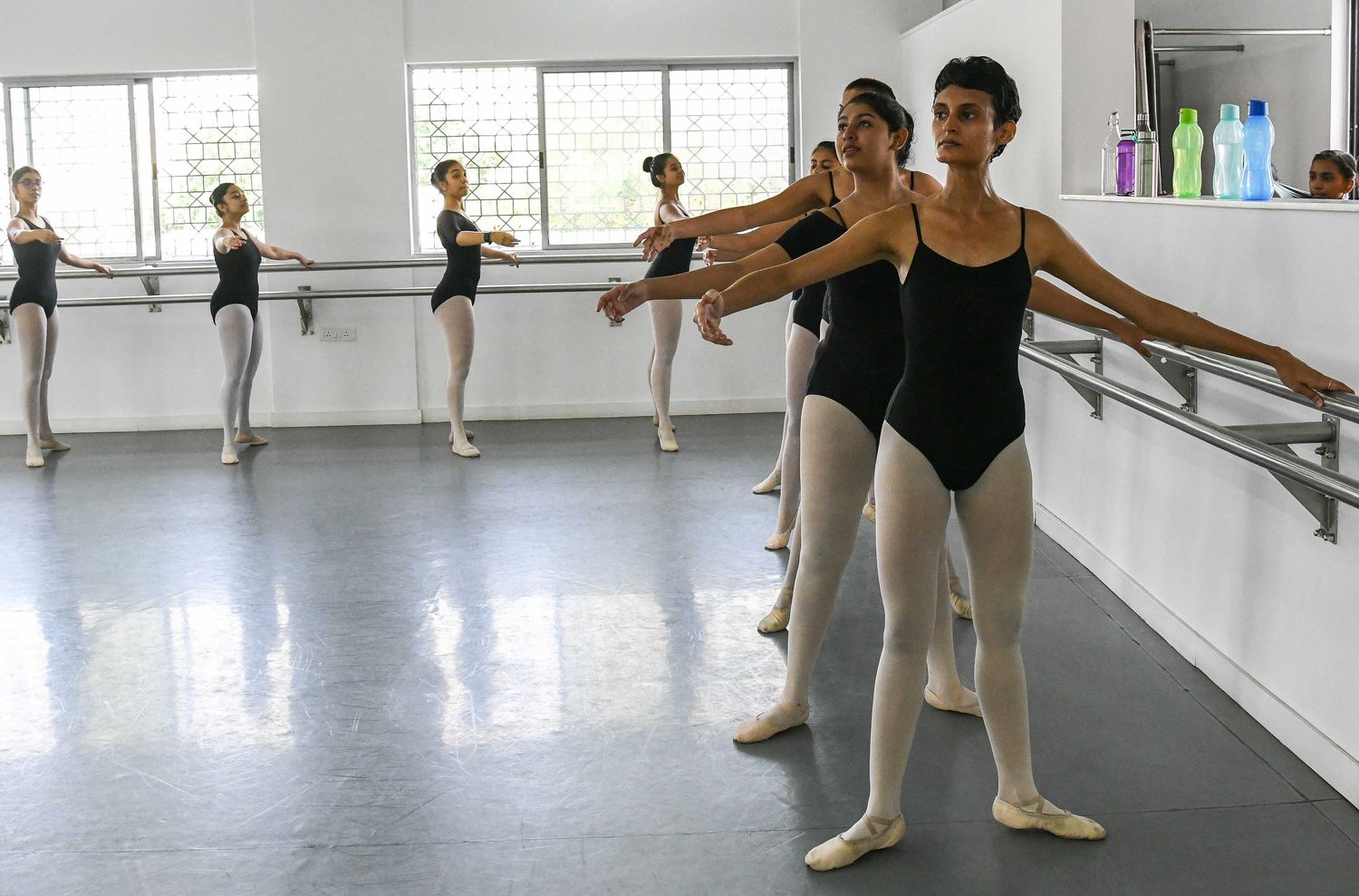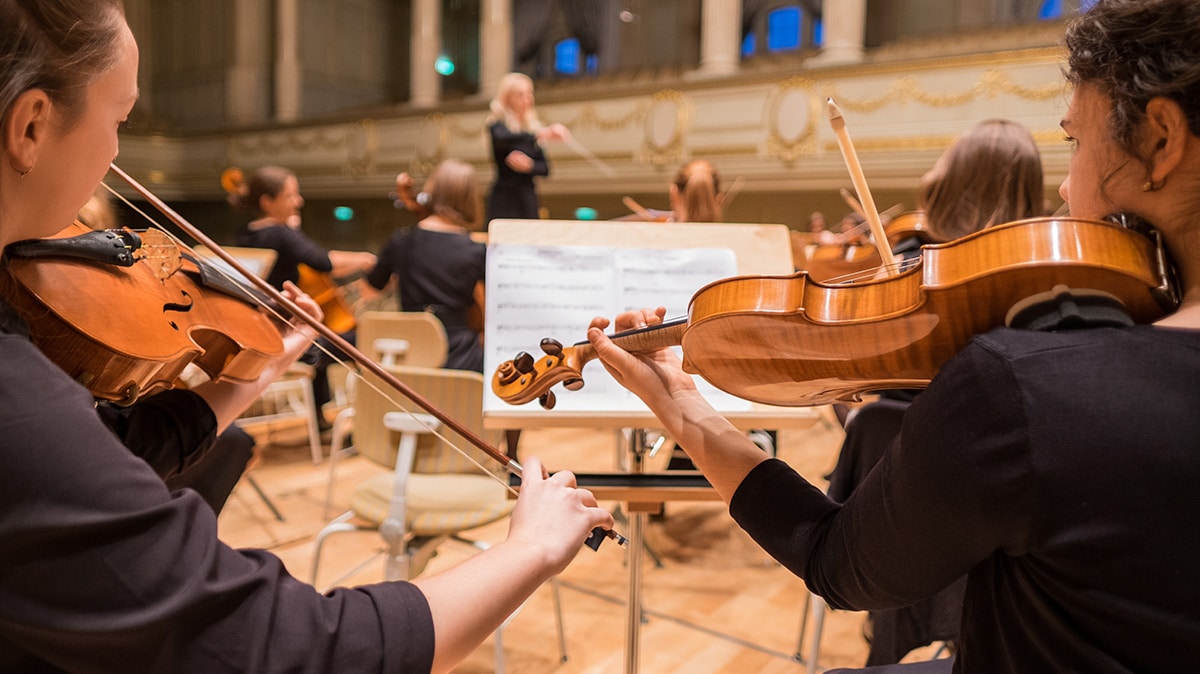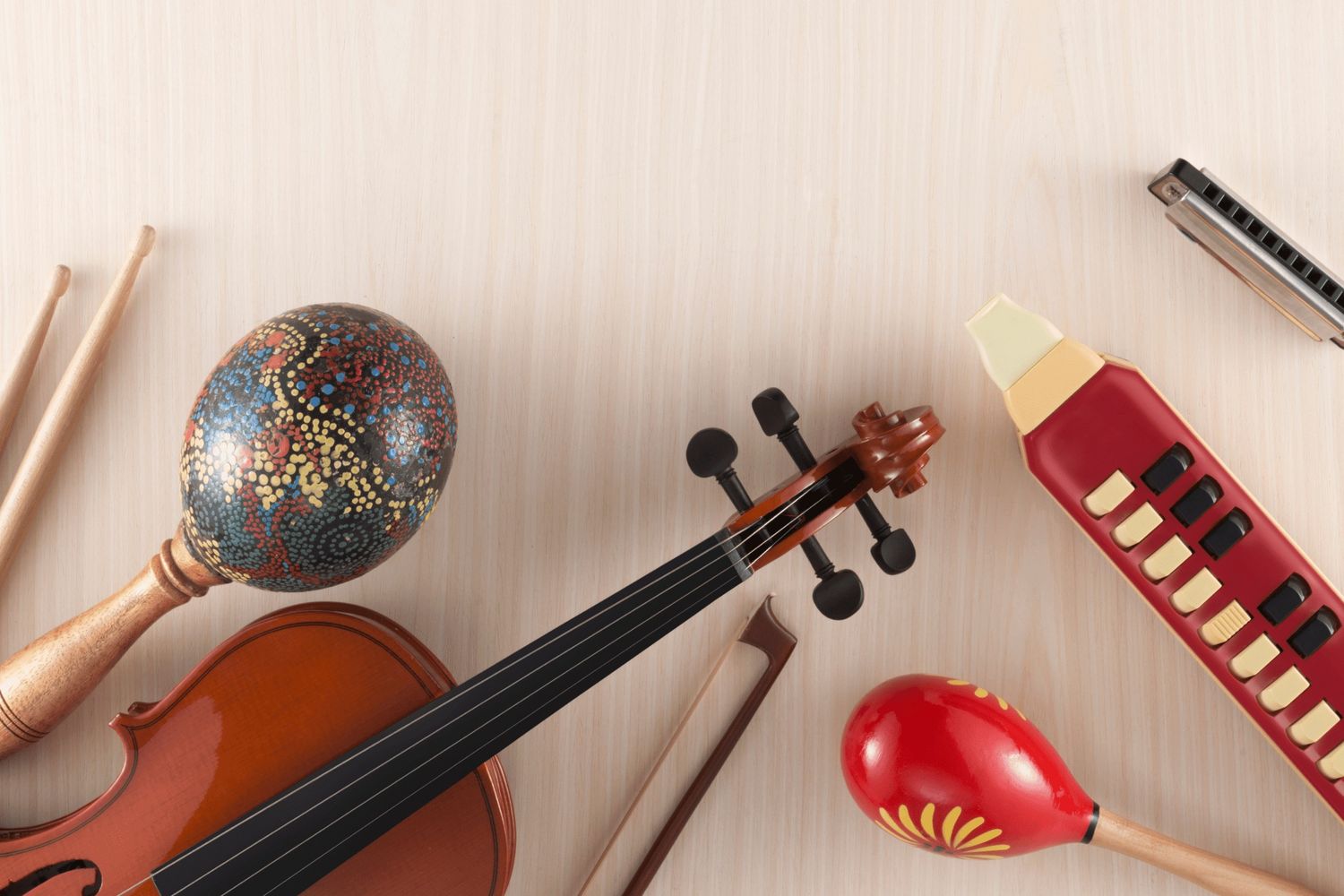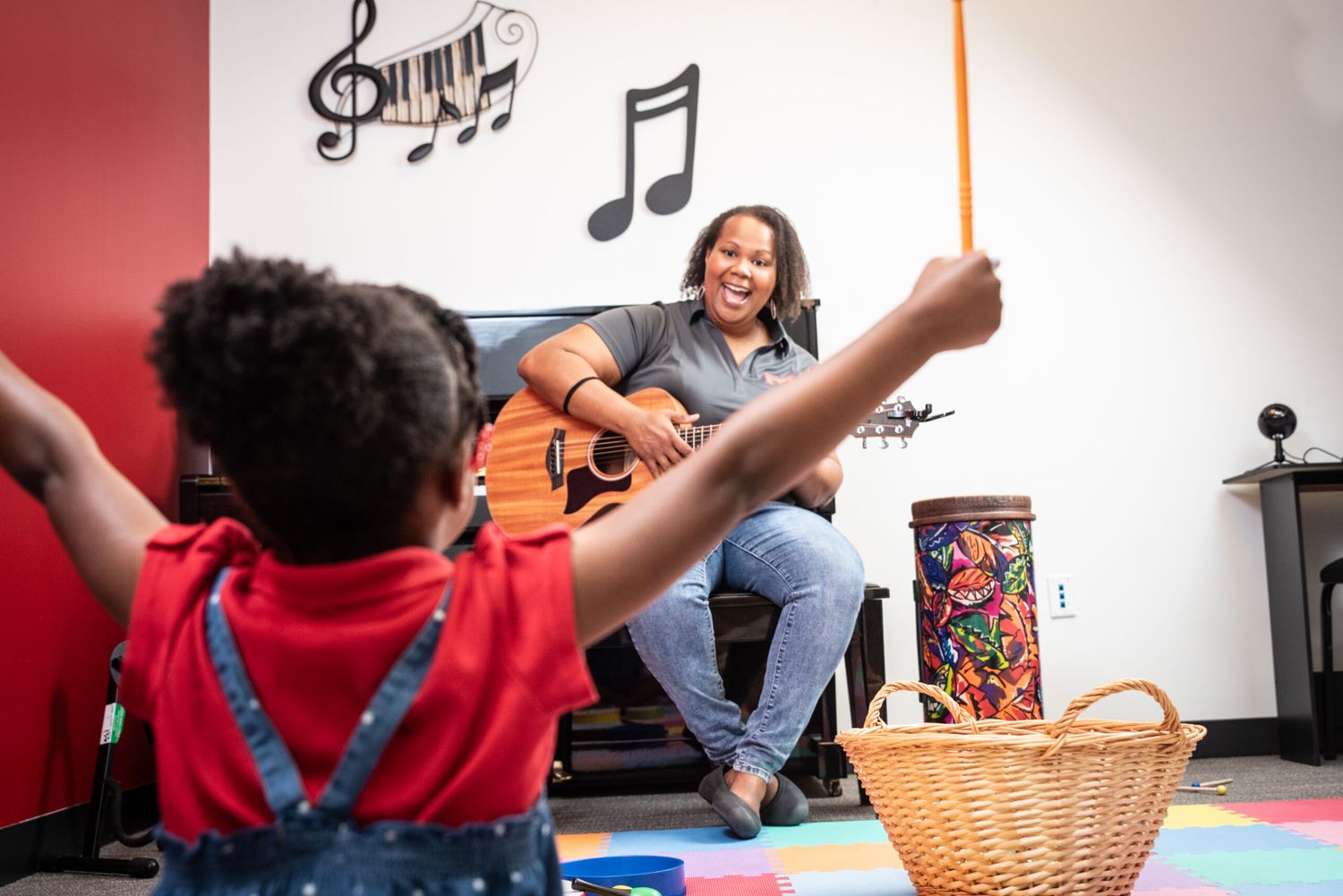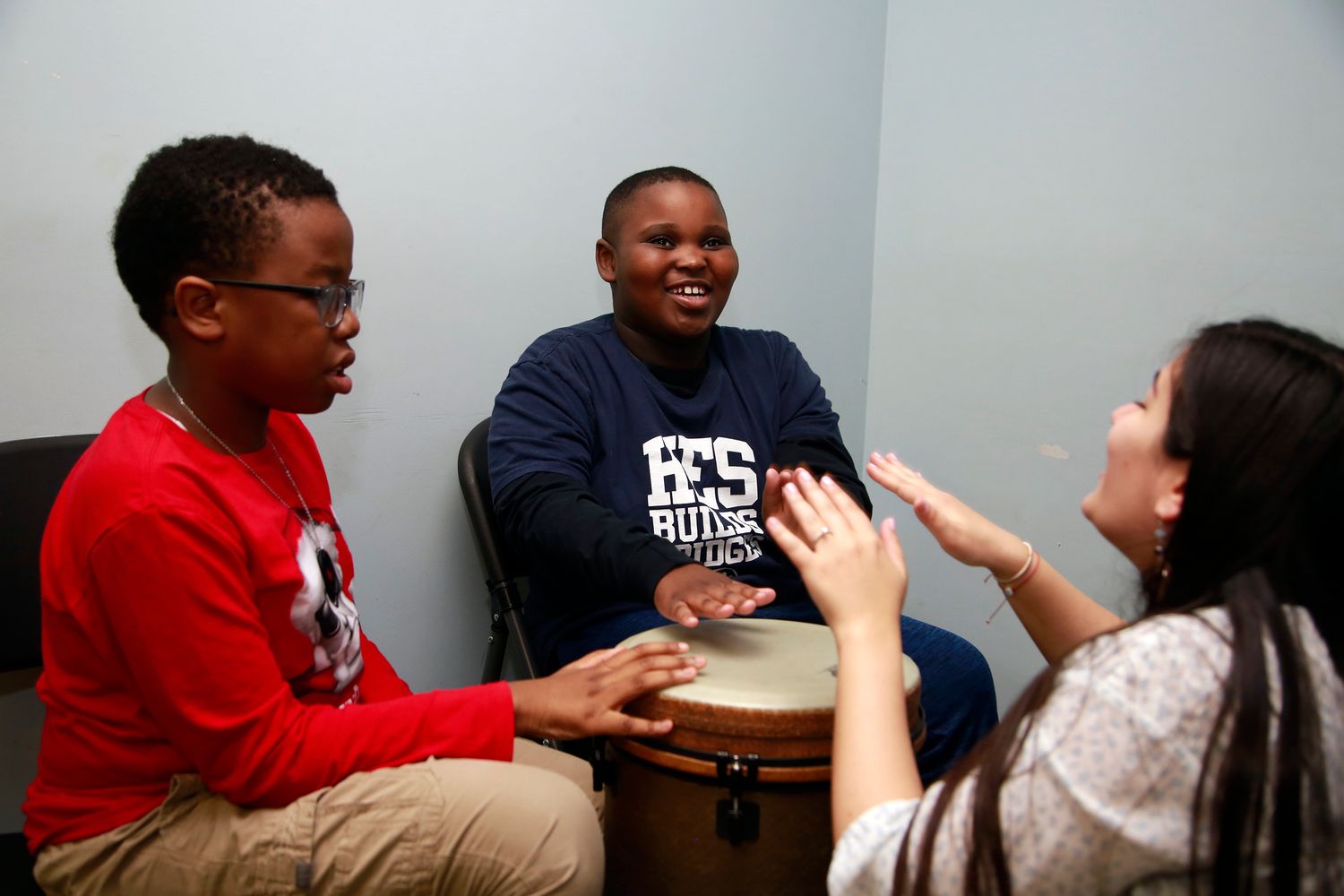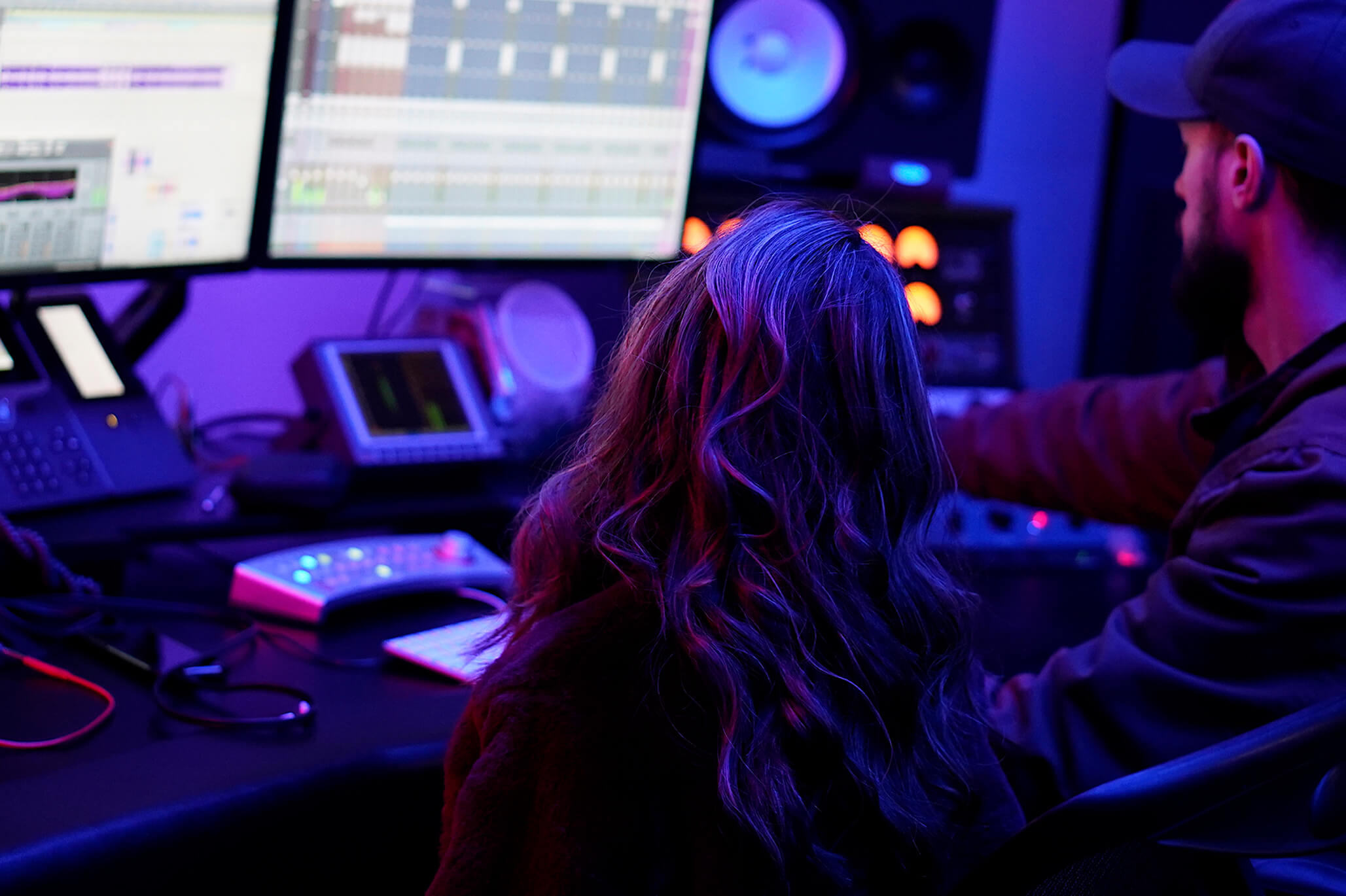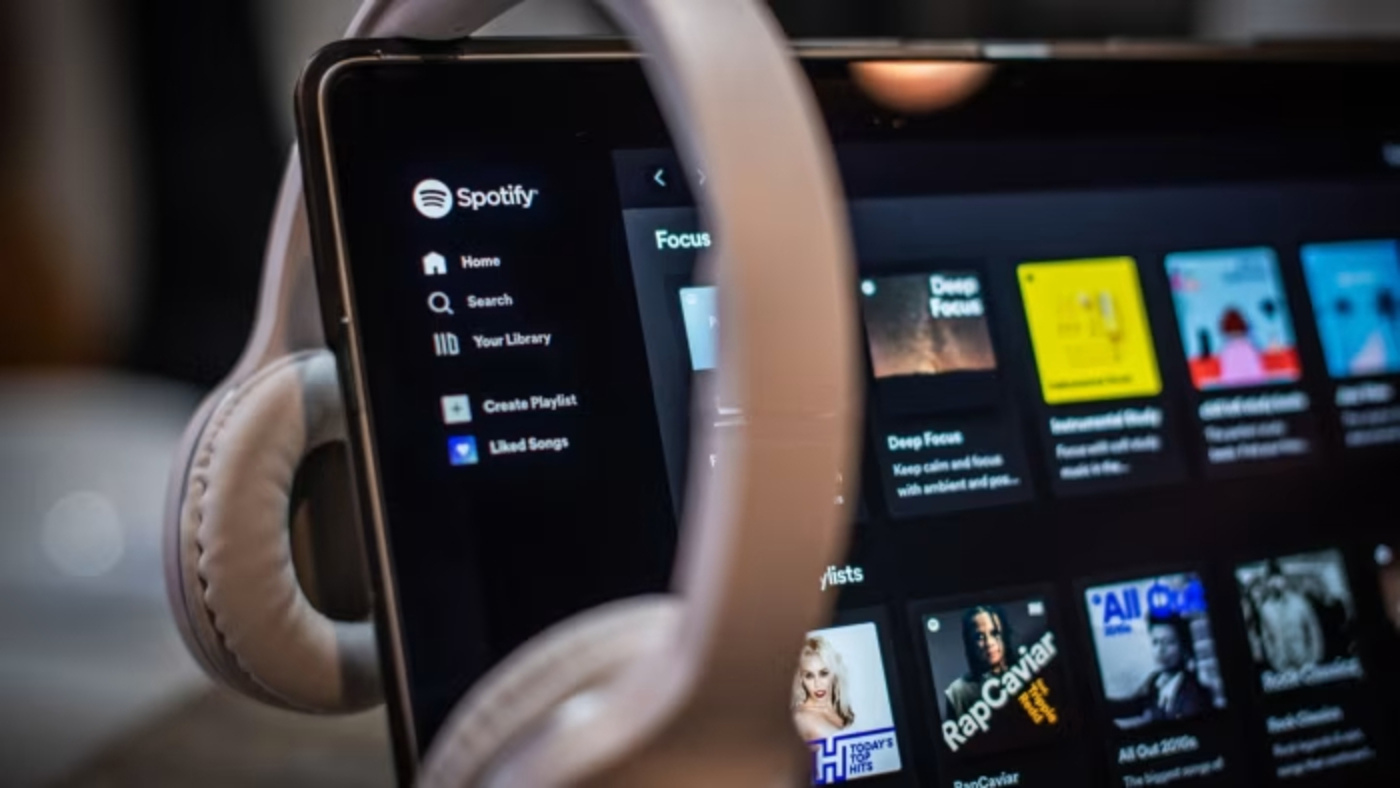Home>Events & Info>Music Therapy>How Can Music Therapy Help Adults With Strokes


Music Therapy
How Can Music Therapy Help Adults With Strokes
Published: February 1, 2024
Discover the power of music therapy for adults recovering from strokes. Experience the therapeutic benefits of music in rehabilitation and mental well-being.
(Many of the links in this article redirect to a specific reviewed product. Your purchase of these products through affiliate links helps to generate commission for AudioLover.com, at no extra cost. Learn more)
Table of Contents
- Introduction
- Understanding Strokes
- Music Therapy: An Overview
- Benefits of Music Therapy for Adults with Strokes
- Improve Motor Skills and Coordination
- Enhance Speech and Language Abilities
- Reduce Anxiety and Depression
- Boost Cognitive Functioning
- Increase Emotional Well-being
- Enhance Quality of Life
- Integrating Music Therapy into Stroke Rehabilitation
- Techniques and Approaches Used in Music Therapy
- Case Studies: Successful Music Therapy Interventions
- Considerations and Limitations of Music Therapy for Stroke Patients
- Conclusion
- References
Introduction
Music has been a powerful tool for emotional expression, communication, and healing for centuries. In recent years, its therapeutic benefits have gained recognition in the field of healthcare. One area where music therapy has shown remarkable promise is in the rehabilitation of individuals who have experienced strokes.
Strokes, often referred to as “brain attacks,” occur when blood flow to the brain is disrupted, resulting in damage to brain cells. This can lead to various physical, cognitive, and emotional challenges for the affected individuals. Stroke survivors often struggle with motor impairments, language difficulties, anxiety, depression, and a decreased quality of life.
Music therapy, a specialized form of therapy that incorporates music and its elements, has proven to be an effective and holistic approach in addressing these challenges. By engaging individuals in musical activities and interventions, music therapists can stimulate brain pathways, enhance motor skills, improve speech and language abilities, reduce anxiety and depression, and uplift emotional well-being.
In this article, we will explore the remarkable benefits of music therapy for adults who have experienced strokes. We’ll delve into the specific ways in which music therapy can improve motor skills and coordination, enhance speech and language abilities, reduce anxiety and depression, boost cognitive functioning, and increase emotional well-being. Additionally, we’ll examine how integrating music therapy into stroke rehabilitation can enhance the overall quality of life for survivors.
Furthermore, we’ll discuss various techniques and approaches used in music therapy, such as rhythmic entrainment, melodic intonation therapy, and music-assisted relaxation. We’ll also share real case studies that illustrate the successful outcomes of music therapy interventions in stroke rehabilitation.
While music therapy offers significant benefits, it’s essential to consider certain limitations and factors to ensure its effectiveness and safety for stroke patients. We’ll address these considerations to provide a comprehensive understanding of the role of music therapy in stroke rehabilitation.
Join us as we explore the captivating field of music therapy and how it can help adults recover and heal after strokes. Through the power of music, hope and healing can flourish.
Understanding Strokes
Before delving into the benefits of music therapy for stroke survivors, it’s important to understand the nature of strokes and the impact they can have on individuals. Strokes, also known as cerebrovascular accidents, are sudden disruptions in blood flow to the brain.
Strokes can occur in two main ways: ischemic strokes and hemorrhagic strokes. Ischemic strokes, which account for the majority of cases, happen when a blood clot or plaque buildup blocks an artery, cutting off the blood supply to the brain. Hemorrhagic strokes, on the other hand, occur when a blood vessel in the brain ruptures, leading to bleeding.
The effects of a stroke can vary depending on the location and severity of the brain damage. Common consequences include motor impairments, such as muscle weakness or paralysis, difficulty with speech and language, cognitive challenges, such as memory loss or executive functioning deficits, emotional disturbances, and changes in behavior and mood.
Additionally, stroke survivors often experience various physical and psychosocial challenges that affect their daily lives. These can include difficulty with self-care tasks, reduced mobility, social isolation, and a decreased quality of life.
It’s crucial to note that stroke recovery is a complex and individualized process. The extent and speed of recovery vary from person to person, depending on factors such as the severity of the stroke, age, overall health, and access to rehabilitation services.
Now that we have a basic understanding of strokes and their consequences, let’s explore the role of music therapy in helping adults recover and regain their quality of life after experiencing a stroke.
Music Therapy: An Overview
Music therapy is a specialized healthcare profession that utilizes music and its elements to facilitate positive changes in a person’s physical, emotional, cognitive, and social well-being. It involves both active and passive participation in music-based activities, led by a trained and certified music therapist.
Music therapy interventions can take various forms, including listening to music, singing, playing musical instruments, improvisation, songwriting, and movement to music. These activities are carefully designed and tailored to meet the specific needs and goals of each individual.
The therapeutic use of music dates back centuries, but its formal recognition as a healthcare profession began in the mid-20th century. Today, music therapists work in a wide range of settings, including hospitals, rehabilitation centers, mental health facilities, schools, and nursing homes.
Music therapy has gained recognition and acceptance due to its ability to reach individuals on multiple levels. The power of music to evoke emotions, memories, and physical responses makes it a unique and effective therapeutic tool.
Music therapy is rooted in neuroscience and psychological theories. Research has shown that engaging with music can stimulate multiple areas of the brain, facilitating neuroplasticity and supporting the rewiring of neural pathways. This makes it particularly beneficial for individuals who have experienced brain injuries, such as strokes.
Furthermore, music therapy offers a non-threatening and enjoyable means of communication and self-expression. It can serve as a bridge between the therapist and the individual, fostering a therapeutic alliance and providing a safe space for exploration and growth.
Music therapy is a person-centered approach, focusing on the unique strengths, preferences, and goals of each individual. The music therapist assesses the needs of the person and designs interventions that target specific areas of functioning, such as motor skills, speech and language abilities, cognitive functioning, emotional well-being, and social interaction.
In the next section, we will delve into the specific benefits that music therapy can offer to adults who have experienced strokes. From improving motor skills to enhancing emotional well-being, music therapy has the potential to make a profound impact on the recovery process and overall quality of life for stroke survivors.
Benefits of Music Therapy for Adults with Strokes
Music therapy has shown remarkable benefits for adults who have experienced strokes. Through various musical interventions, music therapists can address the physical, cognitive, emotional, and social challenges that arise from stroke-related impairments. Here are some of the key benefits of music therapy for stroke survivors:
1. Improve Motor Skills and Coordination
Engaging in rhythmic activities, playing musical instruments, and participating in movement-based exercises during music therapy sessions can help improve motor skills and coordination. The rhythmic patterns in music can facilitate movement initiation, coordination, and balance, leading to enhanced motor control and rehabilitation of affected limbs.
2. Enhance Speech and Language Abilities
Stroke survivors often face communication difficulties, including speech and language impairments. Music therapy techniques such as melodic intonation therapy use the melodic elements of music to stimulate speech production and improve language abilities. Singing or rhythmic speech patterns can help activate language centers in the brain and facilitate the expression of words and phrases.
3. Reduce Anxiety and Depression
Experiencing a stroke can lead to increased levels of anxiety and depression. Music therapy provides a nurturing and supportive environment for emotional expression and release. Listening to calming music or participating in music-making activities can promote relaxation, reduce stress, and alleviate symptoms of anxiety and depression.
4. Boost Cognitive Functioning
Music engages multiple cognitive processes, including memory, attention, and executive functioning. By incorporating cognitive stimulation activities, such as learning new songs or playing music-based memory games, music therapy can help improve cognitive functioning in stroke survivors. This can lead to enhanced memory recall, attention span, and problem-solving abilities.
5. Increase Emotional Well-being
Music has a powerful impact on emotions, and music therapy harnesses this effect to promote emotional well-being. Playing or listening to music that resonates with the individual can evoke positive emotions, increase self-esteem, and provide a sense of empowerment. Music therapy can also provide a healthy outlet for emotional expression and help individuals process and cope with the emotional challenges that arise from stroke recovery.
6. Enhance Quality of Life
Music therapy has the potential to significantly enhance the overall quality of life for stroke survivors. By addressing physical, cognitive, and emotional needs, it can improve functional abilities, increase social engagement, foster meaningful connections with others, and promote a sense of purpose and joy.
These are just a few examples of the benefits that music therapy can provide for adults who have experienced strokes. The next section will explore how music therapy interventions can be integrated into stroke rehabilitation programs to maximize their effectiveness.
Improve Motor Skills and Coordination
One of the significant challenges stroke survivors face is motor impairments, including muscle weakness, decreased range of motion, and impaired coordination. Music therapy offers a unique and engaging approach to address these physical challenges and promote the recovery of motor skills.
Rhythmic entrainment, a fundamental technique used in music therapy, involves synchronizing movements to the beat of music. By engaging in rhythmic activities, such as clapping or tapping to a steady rhythm, stroke survivors can improve their motor coordination and timing. The consistent beat of the music provides an external cue that helps individuals initiate and coordinate movements more effectively.
In addition to rhythmic entrainment, playing musical instruments can also be beneficial for improving motor skills and coordination. Learning and playing simple instruments like drums, shakers, or handbells can help strengthen fine motor control and promote bilateral coordination. Using their affected limbs to strike or hold the instruments encourages movement and can aid in regaining motor function.
Music therapy can also incorporate movement-based exercises to further enhance motor skills and coordination. Dance movements, such as simple choreographed routines or improvised movement to music, can help improve balance, flexibility, and body awareness. These activities provide opportunities for practicing weight shifting, coordination of limbs, and overall motor control.
Another valuable aspect of music therapy in motor skill rehabilitation is the incorporation of therapeutic exercises that target specific muscle groups. By combining repetitive movements with musical cues, stroke survivors can work on strengthening and retraining specific muscles. For example, tapping a drum with rhythmic patterns can help improve hand and arm coordination, while conducting hand movements while listening to music can serve as a therapeutic exercise for upper limb rehabilitation.
By actively engaging stroke survivors in these music-based activities, music therapy promotes neuroplasticity and rewiring of neural connections in the brain. The synchronous activation of motor and auditory areas of the brain during music-making enhances the brain’s ability to reorganize and adapt, leading to improved motor skills. Over time, regular engagement in music therapy interventions can contribute to a more fluid, coordinated, and functional movement for stroke survivors.
The benefits of music therapy for improving motor skills and coordination are evident in the progress and achievements of stroke survivors. Through the power of music, stroke rehabilitation becomes an enjoyable, engaging, and effective process, ultimately helping individuals regain independence in their daily activities and improve their overall quality of life.
Enhance Speech and Language Abilities
One of the common challenges that stroke survivors face is the impairment of speech and language abilities. Music therapy offers a powerful and effective approach to support the rehabilitation of speech and language skills in individuals who have experienced strokes.
One technique commonly used in music therapy for speech and language rehabilitation is melodic intonation therapy (MIT). MIT utilizes the melodic elements of music, such as rhythm and pitch, to facilitate the production of speech in individuals with non-fluent aphasia. Stroke survivors are encouraged to sing or chant phrases and sentences to melodic patterns, leveraging the intact melodic processing areas of the brain to stimulate the production of language.
The melodic intonation therapy approach promotes the engagement of the right hemisphere of the brain, which is associated with prosody and melodic processing. By tapping into this intact neural pathway, stroke survivors can access language and express themselves through melodic intonation, even if they are initially unable to speak fluently. Over time, with practice and repetition, the therapy promotes the reestablishment of more natural speech patterns and the recovery of language abilities.
In addition to melodic intonation therapy, singing can be a beneficial tool in enhancing speech and language abilities. Engaging in singing activities helps activate and strengthen the muscles involved in speech production, such as those in the articulatory system. Singing also provides a rhythmic and melodic framework that supports the timing and coordination of speech, improving overall clarity and fluency.
The use of familiar and meaningful songs is another effective strategy in music therapy for speech and language rehabilitation. Singing along to familiar songs can tap into preserved musical memories, activating neural networks associated with long-term memory and emotional processing. This can help individuals recall and articulate words and phrases that may otherwise be challenging to express spontaneously.
Moreover, music therapy offers a supportive and non-threatening environment for practicing speech and language skills. The rhythmic and repetitive nature of music can provide a predictable structure that reduces anxiety and enhances the confidence of stroke survivors in their ability to communicate. The therapeutic relationship formed with the music therapist also fosters a safe space for individuals to explore and experiment with their speech and language abilities without fear of judgment.
By incorporating these music-based techniques and interventions into stroke rehabilitation, music therapy can significantly contribute to the enhancement of speech and language abilities. It provides a creative and engaging avenue for individuals to regain their communication skills, ultimately improving their overall quality of life and empowering their continued recovery.
Reduce Anxiety and Depression
Anxiety and depression are common emotional challenges that stroke survivors may face as they navigate the recovery process. Music therapy offers a unique and effective approach to address these psychological and emotional needs, providing comfort, support, and opportunities for emotional expression.
Listening to music can have a profound impact on mood and emotions. Certain types of music, such as calming melodies or familiar songs associated with positive memories, have been shown to reduce anxiety and promote relaxation. Music therapy utilizes these therapeutic qualities of music by incorporating personalized playlists or specially selected music to create a soothing and comforting atmosphere.
Active music-making and engagement in music therapy activities can also help reduce anxiety and depression. Participating in musical improvisation, playing an instrument, or singing can elicit a sense of joy, self-expression, and accomplishment. The engagement in these activities releases endorphins, which are natural mood-lifting chemicals in the brain, contributing to an improved emotional state.
Music therapy also provides a safe and supportive environment for emotional expression and processing. Stroke survivors may find it challenging to express their fears, frustrations, or sadness verbally. Through music, they can channel their emotions and release pent-up feelings. The music therapist can facilitate this process by encouraging improvisation or songwriting, allowing individuals to express themselves in a non-verbal and creative way.
Furthermore, group music therapy sessions provide opportunities for social support and connection with others who are going through similar experiences. Sharing music-making experiences with peers and engaging in group discussions can help combat feelings of isolation and promote a sense of belonging and solidarity. The collective energy and support within the group foster a positive and uplifting environment that can counteract the negative effects of anxiety and depression.
Research has consistently demonstrated the effectiveness of music therapy in reducing anxiety and depression in various populations, including stroke survivors. The emotional benefits of music therapy extend beyond the therapy session, as individuals can use music as a coping strategy in their daily lives to manage stress and regulate their emotions.
By addressing the emotional well-being of stroke survivors, music therapy plays a crucial role in enhancing their overall quality of life. By reducing anxiety and depression, it promotes a positive mindset, empowers individuals in their recovery journey, and enables them to embrace life with newfound resilience and hope.
Boost Cognitive Functioning
Cognitive challenges, such as memory loss, attention deficits, and difficulties with problem-solving, are common after strokes. Music therapy offers a range of interventions that can effectively stimulate and enhance cognitive functioning in stroke survivors.
Engaging in musical activities requires the integration of various cognitive processes, including attention, memory, and executive functioning. Playing an instrument, learning new songs, or participating in music-based memory games all provide opportunities to exercise and strengthen these cognitive skills.
Music therapy interventions often incorporate structured exercises that target specific cognitive abilities. For example, rhythmic-based activities can improve temporal processing, aiding in the perception and organization of time. Playing musical instruments requires fine motor control and coordination, which can enhance both executive functioning and motor planning skills.
Moreover, music therapy can leverage the power of music to enhance memory functioning. Melodies and rhythms are known to facilitate memory recall. By incorporating familiar songs or creating mnemonic devices using music, stroke survivors can improve their ability to remember information, such as daily routines or important instructions.
In addition to specific exercises, music therapy provides a stimulating and engaging environment that promotes overall cognitive engagement. Participating in music-making requires active listening, anticipation, and responsiveness, all of which can help sharpen cognitive skills and promote neuroplasticity.
Research has shown that music therapy can lead to improvements in cognitive functioning in stroke survivors. Studies have demonstrated enhanced attention, memory recall, and problem-solving abilities following participation in music therapy interventions. These cognitive gains can have a significant impact on daily functioning and overall quality of life.
Furthermore, music therapy has demonstrated its effectiveness in supporting individuals with dementia and other cognitive disorders. The cognitive benefits observed in those populations can also be applicable to stroke survivors, as the underlying mechanisms and cognitive processes targeted are similar.
By harnessing the power of music to stimulate cognitive processes, music therapy provides stroke survivors with an enjoyable and effective means of boosting their cognitive functioning. Through regular engagement in music-based interventions, individuals can regain cognitive abilities and regain independence in their daily lives.
Increase Emotional Well-being
Emotional well-being is a crucial aspect of overall recovery and quality of life for stroke survivors. Music therapy offers a unique approach to promote emotional well-being by providing a safe, creative, and expressive outlet for individuals to process their emotions and uplift their spirits.
Music has the power to evoke strong emotions and connect with deep-seated feelings. In music therapy, this therapeutic effect is harnessed to create a supportive environment for emotional expression and exploration. Listening to music that resonates with the individual’s personal experiences and emotions can evoke a range of emotions, including joy, nostalgia, and comfort.
Furthermore, actively engaging in music-making activities can provide a sense of empowerment and self-expression. Playing an instrument, singing, songwriting, or improvising music allows individuals to channel their emotions and communicate their inner world in a non-verbal and creative manner.
Music therapy can also assist in reducing feelings of anxiety and depression, which commonly arise in the aftermath of a stroke. The soothing and calming qualities of music can promote relaxation and decrease stress levels. Engaging in music therapy activities, such as guided relaxation exercises or listening to calming melodies, can help individuals find moments of tranquility and inner peace.
Group music therapy sessions offer an opportunity for socialization, connection, and support, which contribute to emotional well-being. Sharing music-making experiences with others who have experienced similar challenges can create a sense of belonging and understanding. The collective energy and positive atmosphere within the group can uplift spirits, enhance social bonds, and provide a supportive network for emotional healing.
Music therapy also enables individuals to develop coping skills and resilience in the face of emotional challenges. The creative and expressive nature of music therapy encourages individuals to explore and process their emotions in a constructive and safe manner. This can lead to increased self-awareness, emotional regulation, and the development of effective coping strategies.
Research has shown the significant impact of music therapy on emotional well-being in stroke survivors. Studies have reported improvements in mood, self-esteem, and overall emotional state following music therapy interventions. These emotional boosts have a ripple effect, influencing other areas of recovery and contributing to a higher quality of life.
By providing a therapeutic space for emotional expression and exploration, music therapy plays a vital role in supporting the emotional well-being of stroke survivors. Through the power of music, individuals can find solace, joy, and healing, ultimately contributing to their overall recovery and well-being.
Enhance Quality of Life
Music therapy has the power to significantly enhance the overall quality of life for stroke survivors. By addressing physical, cognitive, and emotional well-being, music therapy interventions contribute to a more fulfilling and meaningful life following a stroke.
One significant way in which music therapy enhances quality of life is by promoting functional independence. By improving motor skills, coordination, and speech abilities, music therapy helps individuals regain the ability to perform everyday tasks, such as self-care, writing, or using utensils. This increased independence fosters a sense of autonomy and empowerment, allowing stroke survivors to engage more fully in their daily lives.
In addition to physical function, music therapy also enhances social interaction and connection. Group music therapy sessions provide opportunities for socialization, camaraderie, and a sense of belonging. Engaging in music-making activities with others who have shared experiences fosters mutual support, understanding, and empathy. The social bonds formed within music therapy sessions can extend beyond the therapy setting, leading to increased social engagement and a broader support network.
Music therapy interventions also contribute to cognitive stimulation, promoting mental acuity and engagement. By challenging cognitive skills, such as attention, memory, and executive functioning, music therapy provides opportunities for continued cognitive development. This mental stimulation can lead to improved cognitive abilities and a sense of intellectual fulfillment.
Moreover, music therapy has a profound impact on emotional well-being, reducing symptoms of anxiety and depression and promoting emotional expression and resilience. By providing a safe and supportive environment for emotional exploration, music therapy enables individuals to process and cope with the emotional challenges that arise from stroke recovery. This emotional well-being directly contributes to an improved quality of life, as it enhances overall mood, self-esteem, and a sense of inner peace and contentment.
Additionally, music therapy promotes a sense of joy, creativity, and self-expression. Engaging in music-based activities allows individuals to tap into their artistic abilities and explore their unique musical talents. This creative outlet fosters a sense of purpose, self-discovery, and personal growth.
Finally, music is a source of enjoyment and pleasure, and music therapy provides opportunities for individuals to experience the beauty and power of music. Participating in music-making activities, attending music therapy sessions, or simply listening to favorite songs can bring immense joy and comfort. These positive experiences contribute to an overall sense of happiness and well-being.
By addressing physical, cognitive, and emotional needs, music therapy enhances the overall quality of life for stroke survivors. It promotes functional independence, social connection, mental stimulation, emotional well-being, creativity, and the pure enjoyment of music. Through the transformative power of music, individuals can fully embrace their lives post-stroke and experience a higher quality of life.
Integrating Music Therapy into Stroke Rehabilitation
Integrating music therapy into stroke rehabilitation programs offers a powerful and effective approach to promote the recovery and well-being of individuals who have experienced strokes. By incorporating music therapy into the multidisciplinary care team, stroke survivors can benefit from a comprehensive and holistic approach to their rehabilitation journey.
Collaboration between music therapists and other healthcare professionals, such as physical therapists, occupational therapists, and speech-language pathologists, is key to the successful integration of music therapy into stroke rehabilitation. By working together, these professionals can create a cohesive treatment plan that addresses the physical, cognitive, emotional, and social needs of the stroke survivor.
Music therapy can be seamlessly integrated into various stages of stroke rehabilitation. In the acute phase, music therapy can provide emotional support and relaxation, reducing stress and anxiety for both the individual and their loved ones. Playing soothing music or engaging in calming musical activities can help create a healing environment that promotes the body’s natural recovery processes.
In the subacute and chronic phases of stroke rehabilitation, music therapy can focus on functional goals and the development of specific skills. For example, rhythm-based interventions can improve motor coordination and promote the retraining of motor movements. Singing and speech exercises can target the development of speech and language abilities. Customized interventions can be designed to address cognitive challenges, emotional well-being, and social reintegration.
Music therapy can also be seamlessly incorporated into group therapy settings to promote social interaction, connection, and mutual support among stroke survivors. Group music therapy sessions provide opportunities for shared experiences, camaraderie, and the fostering of a sense of belonging and community.
Furthermore, music therapy can extend beyond formal therapy sessions by encouraging stroke survivors to use music as a tool for self-expression, relaxation, and continued healing in their daily lives. Providing stroke survivors with resources and recommendations for incorporating music into their everyday routines can empower them to harness the benefits of music therapy outside of the therapy setting.
It is important for stroke rehabilitation programs to recognize the value and benefits of music therapy and allocate resources to ensure its integration. This includes providing access to qualified and certified music therapists, as well as ensuring that necessary instruments and equipment are available for therapy sessions.
By integrating music therapy into stroke rehabilitation, healthcare teams can provide a comprehensive and holistic approach to promote recovery and well-being. The combination of music therapy with other therapeutic interventions enhances the effectiveness and outcomes of stroke rehabilitation, allowing individuals to achieve their optimum potential for recovery and regain a fulfilling and independent life.
Techniques and Approaches Used in Music Therapy
Music therapy employs a wide range of techniques and approaches to address the specific needs and goals of stroke survivors. These evidence-based interventions utilize the powerful elements of music to promote physical, cognitive, emotional, and social healing. Here are some commonly used techniques in music therapy:
Rhythmic Entrainment:
Using rhythmic cues, such as clapping or tapping, to synchronize movement and improve motor coordination. Rhythm-based activities can stimulate the brain’s motor pathways, supporting the rehabilitation of motor skills.
Melodic Intonation Therapy (MIT):
Using melodic elements, such as intonation and rhythm, to facilitate speech production in individuals with expressive aphasia. MIT leverages the preserved melodic processing areas of the brain to encourage language expression and restore communication abilities.
Musical Improvisation:
Encouraging spontaneous musical expression, allowing individuals to creatively communicate their emotions and thoughts through music. This helps in developing self-expression, increasing self-confidence, and promoting emotional well-being.
Movement to Music:
Incorporating movement and dance into music therapy sessions, promoting motor coordination, balance, and flexibility. Movement to music activities can engage both the body and mind, supporting physical rehabilitation and emotional expression.
Songwriting and Lyric Analysis:
Encouraging individuals to write and create their own songs as a means of self-expression and exploration. Songwriting allows individuals to connect with their personal experiences, emotions, and aspirations. Lyric analysis involves discussing and exploring the meaning and themes of existing songs to promote self-reflection and insight.
Music-Assisted Relaxation:
Using calming and soothing music to promote relaxation, reduce stress, and alleviate symptoms of anxiety and depression. Guided exercises, such as deep breathing and progressive muscle relaxation, are combined with music to enhance the relaxation response.
These are just a few examples of the techniques used in music therapy. The choice of techniques depends on the individual’s needs, goals, and preferences. Music therapists create individualized treatment plans that incorporate a combination of techniques, tailored to the unique needs and strengths of each stroke survivor. By utilizing these techniques, music therapy promotes healing, self-expression, and overall well-being for stroke survivors on their road to recovery.
Case Studies: Successful Music Therapy Interventions
Case studies provide valuable insights into the effectiveness and impact of music therapy interventions for stroke survivors. Here are a few examples of successful music therapy interventions:
Case Study 1:
John, a 55-year-old stroke survivor, experienced significant motor impairments on his right side, affecting his ability to perform daily activities independently. His music therapy sessions incorporated rhythmic entrainment activities, where he played drums and engaged in movement to music exercises. Over a period of several weeks, John showed improved coordination and strength in his affected limbs. He regained the ability to write with his right hand and demonstrated increased confidence and independence in his daily tasks.
Case Study 2:
Anna, a 67-year-old stroke survivor, experienced aphasia, making it difficult for her to express herself verbally. Through melodic intonation therapy (MIT) sessions, Anna practiced singing simple phrases and sentences to melodic patterns. Over time, she began to utilize those melodic patterns to speak the same phrases, gradually transitioning into more fluent speech. MIT helped Anna regain her ability to communicate, significantly reducing her frustration and improving her overall emotional well-being.
Case Study 3:
Michael, a 45-year-old stroke survivor, struggled with anxiety and depression following his stroke. In music therapy sessions, he engaged in music-assisted relaxation exercises, listening to calming instrumental music while practicing deep breathing and progressive muscle relaxation. These sessions provided Michael with a safe and soothing space to reduce stress and promote emotional well-being. Over time, he reported feeling more relaxed, sleeping better, and experiencing a reduction in his anxiety symptoms.
Case Study 4:
Sarah, a 60-year-old stroke survivor, experienced memory difficulties and struggled with feelings of frustration and low self-esteem. Her music therapy sessions included songwriting activities, where she had the opportunity to express her emotions and experiences through lyrics and melodies. The process of songwriting empowered Sarah and allowed her to find a sense of purpose and creativity. She reported an improvement in her mood, increased self-confidence, and a renewed sense of hope for the future.
These case studies highlight the significant impact of music therapy on stroke survivors. The individualized and targeted nature of music therapy interventions allows for a tailored approach that addresses the specific needs and goals of each stroke survivor. Through creative and engaging music-based activities, individuals can achieve meaningful progress in their physical, cognitive, and emotional recovery, ultimately enhancing their overall quality of life.
Considerations and Limitations of Music Therapy for Stroke Patients
While music therapy offers numerous benefits for stroke patients, there are important considerations and limitations to keep in mind when integrating it into their rehabilitation journey:
Patient Suitability:
Music therapy may not be suitable for all stroke patients. Individuals with severe cognitive impairments, receptive aphasia, or auditory processing difficulties may find it challenging to engage in music therapy interventions. Additionally, patients with hearing impairments may require adaptations or alternative approaches to ensure their participation and benefit from the therapy.
Individual Preferences and Relevance:
Personal music preferences and cultural backgrounds influence the effectiveness of music therapy. It’s essential for music therapists to consider the individual preferences, experiences, and cultural backgrounds of stroke patients when selecting music and designing interventions. This personalized approach improves engagement and ensures the therapy resonates with the patient’s unique needs and experiences.
Access to Qualified Music Therapists:
Availability of qualified and certified music therapists may be limited in some healthcare settings. Ensuring stroke patients have access to well-trained professionals with expertise in music therapy is crucial for optimal outcomes. Collaboration between music therapists and the broader healthcare team is essential for coordinated and comprehensive care.
Generalization of Skills:
Transferring the skills acquired in music therapy sessions to everyday life can be challenging for some stroke patients. It’s important to work collaboratively with the patient’s other therapy providers to integrate music therapy goals and strategies with their overall rehabilitation plan. This collaborative approach maximizes the generalization of skills and enhances their application in real-world contexts.
Ethical Considerations:
Respecting the autonomy and dignity of stroke patients is paramount in music therapy. Informed consent, confidentiality, and cultural sensitivity should be upheld throughout the therapy process. Music therapists must also adhere to professional ethical guidelines and maintain appropriate boundaries during the therapeutic relationship.
Research Limitations:
While there is a growing body of research supporting the benefits of music therapy for stroke patients, more high-quality research is needed to further validate the efficacy and optimal applications of specific music therapy interventions. Robust research studies, including randomized control trials and longitudinal studies, can provide a stronger evidence base for music therapy in stroke rehabilitation.
Despite these considerations and limitations, music therapy remains a valuable and promising approach in the rehabilitation of stroke patients. By understanding and addressing these factors, healthcare professionals can maximize the benefits of music therapy, ensuring its safe and effective integration into comprehensive stroke rehabilitation programs.
Conclusion
Music therapy has emerged as a powerful and effective tool in stroke rehabilitation, offering a holistic approach to address the physical, cognitive, emotional, and social needs of stroke survivors. Through various techniques and interventions, music therapy promotes healing, enhances well-being, and improves the overall quality of life for individuals who have experienced strokes.
By engaging in activities such as rhythmic entrainment, melodic intonation therapy, and movement to music, stroke survivors can improve motor skills, regain speech and language abilities, reduce anxiety and depression, boost cognitive functioning, and increase emotional well-being. The therapeutic and expressive qualities of music provide a unique avenue for communication, self-expression, and emotional healing.
Integrating music therapy into stroke rehabilitation requires collaboration among healthcare professionals, such as music therapists, physical therapists, occupational therapists, and speech-language pathologists. By working together, an individualized and comprehensive treatment plan can be developed, taking into account the specific needs, preferences, and goals of the stroke survivor.
While music therapy offers significant benefits, it is important to consider individual suitability, preferences, and access to qualified professionals. Generalizing the skills learned in music therapy sessions to daily life and respecting ethical considerations are also vital aspects of the therapy process. Continued research is needed to further validate the efficacy and optimize the applications of music therapy interventions in stroke rehabilitation.
In conclusion, music therapy holds immense promise in the rehabilitation of stroke patients. Its ability to engage the mind, body, and spirit through the power of music offers a unique and effective approach to promote recovery, enhance well-being, and empower individuals on their journey to regain a fulfilling and independent life post-stroke. By embracing the therapeutic benefits of music, stroke survivors can find hope, healing, and renewed joy in their lives.
References
Aalbers, S., Fusar-Poli, L., Freeman, R. E., Spreen, M., Ket, J. C., Vink, A. C., Maratos, A., Crawford, M., Ballard, C., & Verbeek, M. M. (2017). Music therapy for depression. The Cochrane Database of Systematic Reviews, 11(11), CD004517. doi: 10.1002/14651858.CD004517.pub3
Bradt, J., Magee, W. L., Dileo, C., Wheeler, B. L., & McGilloway, E. (2010). Music therapy for acquired brain injury. Cochrane Database of Systematic Reviews, 7(7), CD006787. doi: 10.1002/14651858.CD006787.pub2
Gold, C., Mössler, K. A., Grocke, D., Heldal, T. O., Tjemsland, L., & Aarre, T. F. (2009). Individual music therapy for mental health care clients with low therapy motivation: Multicentre randomised controlled trial. Psychotherapy and Psychosomatics, 78(5), 319–328. doi: 10.1159/000228967
Kim, S. H., Kim, H. J., & Yoo, E. Y. (2006). Effects of music therapy on depression compared with psychotherapy. The Arts in Psychotherapy, 33(5), 433–439. doi: 10.1016/j.aip.2006.06.001
Rehfeld, K., Müller, P., Aye, N., Schmicker, M., Dordevic, M., Kaufmann, J., Hökelmann, A., Müller, N.G., & Müller, P. (2019). Dancing or fitness sport? The effects of two training programs on hippocampal plasticity and balance abilities in healthy seniors. Frontiers in Human Neuroscience, 29(13), 305. doi: 10.3389/fnhum.2019.00305
Särkämö, T., Tervaniemi, M., Laitinen, S., Forsblom, A., Soinila, S., Mikkonen, M., … Hietanen, M. (2008). Music listening enhances cognitive recovery and mood after a middle cerebral artery stroke. Brain, 131(3), 866-876. doi: 10.1093/brain/awn013
Thompson, G. (2014). Music and the Mind: Understanding the Effects of Music in Stroke Rehabilitation. International Journal of Therapy and Rehabilitation, 21(12), 585–590. doi: 10.12968/ijtr.2014.21.12.585
Thaut, M. H., Leins, A. K., Rice, R. R., Argstatter, H. (2007). Ken Young, Music therapy for emotion management after acquired brain injury: A randomized controlled trial. Journal of Rehabilitation Medicine, 39(8), 581-589. doi: 10.2340/16501977-0086



